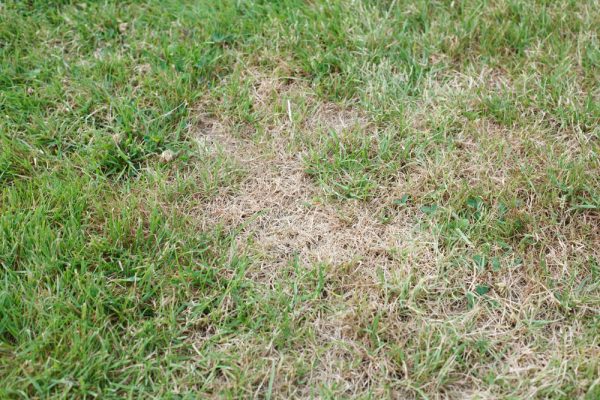
Brown patch is a destructive turfgrass disease that can spread quickly and overtake your yard. It can be hard to notice at first, but as temperatures and humidity increase over the summer, it will become visible. If you suspect your lawns may be infected with brown patch disease act quickly in treating it.
You may see something wrong with your yard, but is it a brown patch? This blog will help you determine if a brown patch is what is infecting your yard and how to treat it. It will also help you learn to prevent this disease if you don’t think your yard has it.
What is Brown Patch Lawn Disease?
Brown patch lawn disease, like Dollar Spot, is a fungus (Rhizoctonia solani fungus) that can spread on a number of turfgrasses, especially perennial ryegrass, tall fescue, bentgrasses, and occasionally Kentucky Bluegrass. It thrives in hot weather and high humidity in the summer and is less common in arid regions. If you see brown spots in your yard and live where there are both hot weather and high humidity, it may be Brown Patch lawn disease.
How Do I Know if I Have it?
Sometimes this disease can be misdiagnosed leading to wrong treatment, which can cause more problems.
Your lawn may have this disease if you see spotting on your grass blades, or if the entire grass blade is starting to turn brown. If there are large patches of dead turfgrass and spotting toward the middle of the blade, a brown patch may be the culprit.
Circular areas of brown and dead grass like a dark ring is an obvious indication of the disease. The disease will continue to grow and spread until treated. Treat as quickly as possible as the disease can spread quickly.
The spotting can vary depending on the grass. Most grasses will exhibit the brown ring to some degree, but tall fescues often don’t. With tall fescue, you may see the fungus scattered and the whole lawn will seem a little “off”.
What Causes Brown Spots?
The disease can begin in cooler temperatures but doesn’t spread or become apparent until the hot and humid summer months. It thrives when nights are above 70 degrees and daytime reaches over 80 degrees with high humidity. Dew, mist, or rain can contribute to its growth.
Below are some items to get your lawn healthy in both the prevention and treatment of this lawn disease.
How Can I Treat Brown Patch?
Here are a few ways you can go about treating a brown patch and how it can be prevented. Some options have a more limited effect than others.
Tips for Preventing Brown Patches
- Watering at midday to prevent wet grass at night can help.
- Mow frequently with sharp blades for more air movement and to dry leaf blades.
- Overseed with fescue varieties that resist disease well.
- Remove dew by mowing or dragging a water hose across the area.
- Use moderate amounts of nitrogenous fertilizer.
- Use fungicides before the onset of the disease (only for high-value ryegrass or bentgrass turfs).
- Over or under fertilizing turf can cause brown patches.
- Hire a TruGreen certified specialist: TruGreen.com.
Tips for Treating Brown Patches
- Use a lawn fungicide. This will be your best weapon in treating a brown patch in your lawns. Fungicides available at retail stores are often ineffective. Use a certified lawn care provider.
Call Us for Professional Service
A specialist will be able to help you find out what your lawn needs to become healthy. For preventing and treating a brown patch in your lawns, this is the best way to go. Give us a call for help with your brown patches or if you would like to discuss other ways on how to fix these issues.
